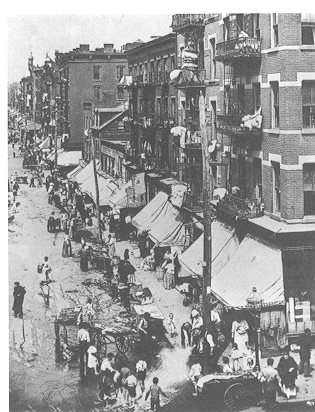
Stephen Crane was an American author born in Newark, New Jersey on November 1, 1871. He was the youngest of fourteen children born to the Reverend Doctor Jonathan Townley Crane and Mary Helen Peck Crane. During his early years Stephen suffered a great deal of personal loss. His father died in 1880, when Stephen was only nine years old. His mother was rarely available to her younger children due to her work as President of the Woman's Christian Temperance Union of Asbury Park and Ocean Grove (Cazemajou, 1974). According to an article in Authors and Artists for Young Adults (1997) Crane's sister Agnes, who was fifteen years older, was his "best friend and teacher" and was responsible for most of his upbringing. Agnes died in 1882 and his mother died in 1891.




Crane attended school for the first time at the age of eight. He began two years late but was a bright student and made up two grades within six weeks ("Stephen Crane," 1997). Crane was not interested in school and found the study of "humanity" more interesting than coursework. While at semi-military school, Claverack College and Hudson River Institute, he studied the civil war and military training. It was there that he began to develop a secular view of the world in opposition to the Christian teaching he had received from his parents ("Stephen Crane," 1997). In 1891, Crane transferred to Syracuse University where he focused on playing baseball. He truthfully admitted that, "I went there more to play baseball than to study" (Burton, 2010).
Crane was an excellent baseball player and it is said that he had the potential to be a professional player. Syracuse University still holds a signed baseball in its archives as a tribute to Stephen Crane, the baseball player. Without a focus on academics, Crane's time at the university was limited to only one year. After leaving school, he returned to Asbury Park and began working with his brother at the Tribune ("Stephen Crane," 1997).
Crane began work as a full-time journalist covering stories of religious importance and attended arts and science conferences and seminars. He also wrote fictional sketches for the Tribune. His work as a journalist piqued his interest in the plight of the poor in New York. He began to observe that environment and spent large amounts of time in The Bowery area of New York. It was there that he developed his first-hand knowledge of poverty and "was able to realistically depict tenement life in his writings" ("Stephen Townley Crane," 2016).
Maggie: A Girl of the Streets was Crane's first literary release. Even with support from Hamlin Garland and William Dean Howells, the work did not sell. A revised version in 1896 still did not produce sales of Crane's story of a young girl born in the slums of New York (Baym, 2012). Crane's second release was The Red Badge of Courage. It was met with such great success that it even elicited a revival of Maggie.
Stephen Crane never served in a war, but his accounts of battle were extremely accurate in the story of a young soldier going into battle for the first time. Crane credited his source for" accurate descriptions of combat was the football field" (Stephen Townley Crane, 2016). After serving as a war correspondent, he stated his depiction was, "All right" (Cazemajou, 1974).
While serving as a war correspondent in the Grecco-Turkish War and the Spanish American War, Crane's health began to fail. Attempts to improve his health failed and he died of Tuberculosis on June 5, 1900 in Germany. He was accompanied by his common-law wife, Cora Taylor. Crane was only 28 years old. Throughout his career Crane was determined to remain true and honest. In a letter to C.K. Linson, Crane wrote, "I understand that a man is born into this world with his own pair of eyes, and he is not at all responsible for his vision-he is merely responsible for his quality of personal honesty. To keep close to this personal honesty is my supreme ambition" ("Stephen Crane," 1997).
